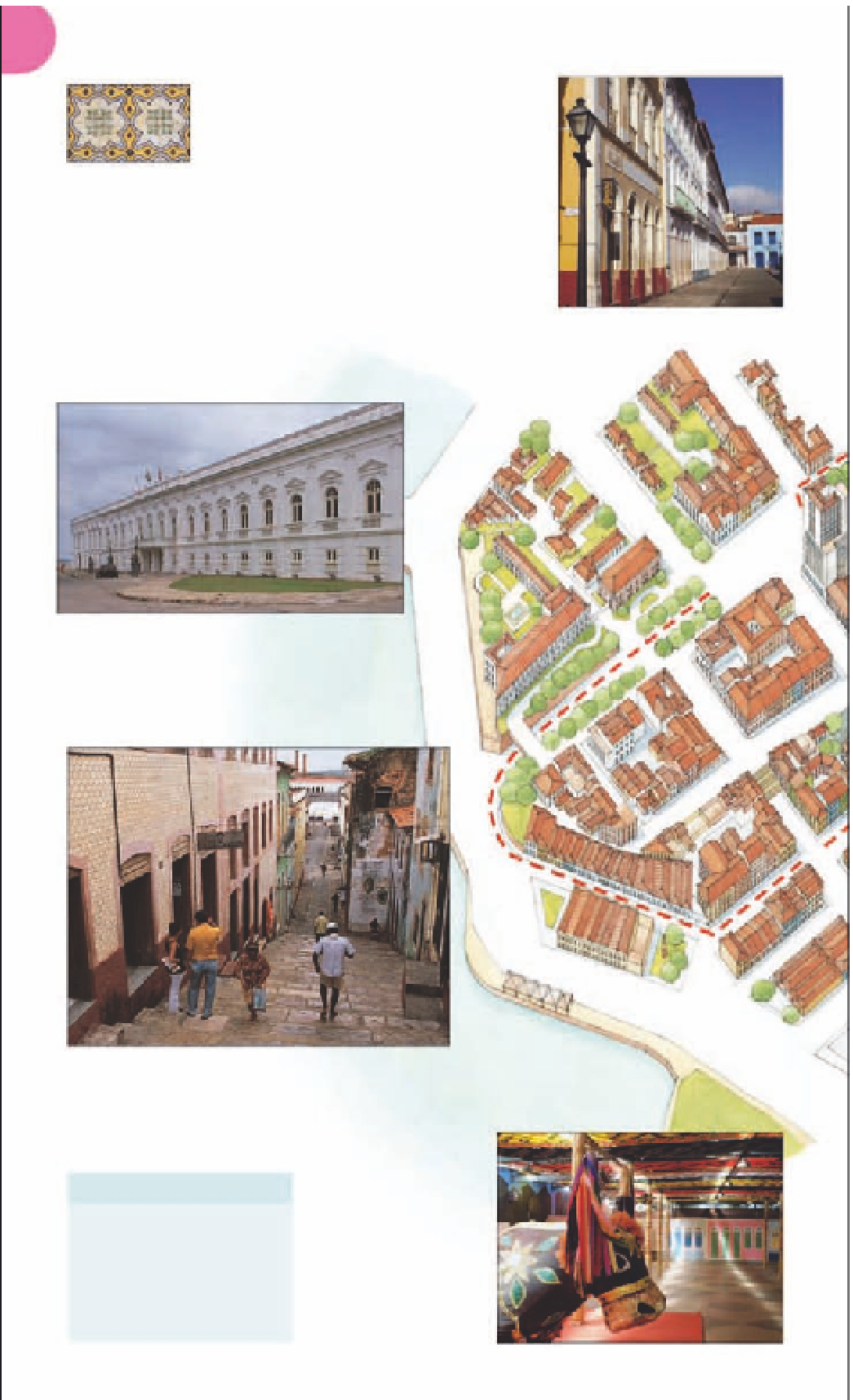Travel Reference
In-Depth Information
Street-by-Street: São Luís
5
One of Brazil's finest examples of
Portuguese colonial architecture, São
Luís was ironically founded by the
French in 1612, and later taken over
by Dutch invaders. In 1644, the city
was finally settled under Portuguese
rule, serving as the export point for sugar and cotton.
Expensive houses and buildings covered with brightly
colored Portuguese tiles were built in the city's urban
center. By the late 1800s, with slavery at an end, São
Luís went into a decline. At the end of the 1970s, the
state government began to invest in preserving the
city's historic center. In 1997, the historical core of São
Luís was designated a UNESCO World Heritage Site.
Detail of a tile,
São Luís
A row of colorful houses along one
of the streets in São Luís
.
Palácio dos Leões
Built in 1766 on the site of the
original French Fort St. Louis, the
Palácio dos Leões is now home to
the Maranhão state government.
Museu de Arte
Visuais
is covered
in elaborate
Portuguese tiles.
Beco Catarina Mina
This picturesque 18th-century
alley connects the lower lying
streets of the historic center with
Avenida Dom Pedro II.
Casa do Maranhão
The former
19th-century customs
building now houses
a fine collection of
Bumba-meu-boi
folklore. Guides walk
visitors through the
colorful exhibits.
STAR SIGHTS
.
Palácio dos Leões
.
Casa das Tulhas
. Centro de Cultura
Popular
For hotels and restaurants in this region see p381 and pp406-407










































